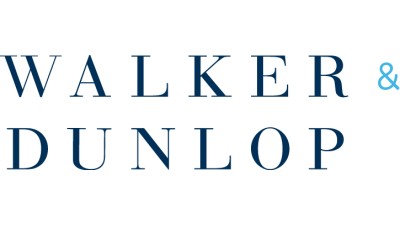Q&A: The Future Of Seattle CRE With Walker & Dunlop
Seattle's claim to fame may be as one of America's rainiest cities, but the city’s blurrily bright surface bespeaks a sunnier outlook. Bisnow chatted with Walker & Dunlop’s Craig Russell on the future of Seattle commercial real estate.

Bisnow: What general trends are you seeing in the Seattle market/overall Pacific Northwest? In which asset classes have you witnessed the biggest changes in this past year?
Craig Russell: The trend that jumps out most to me is price appreciation in suburban markets. The increasing price points of sale transactions in the last 12 months are primarily due to very little new construction in the suburbs, cap rate compression and rent growth.
The second trend—and this is on a more national scale—is that acquisition rehabilitation is the “darling” product, primarily in suburban markets. Cap rates are hovering at their lowest in the market. What’s interesting is that the prices you’re paying are to credit the seller for the value-add that you as the buyer are going to have to create post-purchase. It’s quite disconcerting for buyers.
Looking south to Portland, it is surprising to already see supply-driven vacancy and Class-A rent moderation. Portland has not had the same job growth as Seattle. Currently, there’s almost no difference in CPA rates between Seattle and Portland, which is typical at the peak of the market, but the historical difference is at least 0.5%.
Over one-third of agency debt year-to-date has been adjustable rate debt. This is astonishingly high. And that probably tells you that, firstly, most buyers believe there’s legs to this market and that secondly, they’re bullish on rates.
Bisnow: Is the Pacific Northwest still a seller’s market? Some industry watchers indicate that the imbalance is leveling out, while others focus on slow sales and diminishing prices. Which side do you fall on?
Craig: Without a doubt, prices are not decreasing anywhere; it’s easy to be tainted by a national perspective where many urban cores are experiencing oversupply. In Seattle’s core, rents are certainly flattening on new construction, but occupancy and absorption are extremely strong in spite of new supply. The impact of 10,000 units a year regionally for the last two to three years is impacting the core market. We’ve seen seasonal concessions on new construction still in lease-up. Everybody’s waiting to see if that happens again this winter, and whether those concessions will stick or go away. There’s no doubt it’s still a seller’s market.
On the flip side, the big question is: Who are the buyers? The buyers have changed. Buyers for Class-A properties are changing to people who didn’t “get in” to the market in 2013, 2014, 2015. The people who bought a few years ago have now moved on to chase yields elsewhere since the cap rates are so slow, and are already profit-taking. It's also harder to find institutional equity partners for new construction in downtown Seattle.
Bisnow: Several market predictions published this June forecast a 10% to 11% range of appreciation in the Pacific Northwest. What’s your take?
Craig: I certainly would not predict 10% to 11% appreciation in the Seattle urban core. Class-A new construction "effective" rents have flattened, and the majority of cap rate compression is behind us. Financing is no more aggressive now than a year ago.
What separates Seattle from other markets is the continued job growth. We’re adding more jobs than originally anticipated, many of which are by Amazon, Google and other high-tech companies. We’ve had sustained, significant job growth since 2011 that’s consistently exceeding expectations. Price appreciation this next year will have more to do with the high component of new Class-A construction. The same applies to Portland.
To learn more about Bisnow partner Walker & Dunlop, click here.

